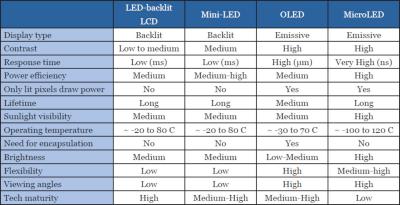This is a sponsored post by Radiant Vision Systems
Introduction
MicroLEDs (micro-LEDs, mLEDs, or µLEDs) continue to demonstrate performance advantages for displays, ushering in a new generation of backlit and direct-view illumination technology. MicroLED displays consist of an array of microscopic LEDs (light emitting diodes) that form the display’s individual subpixel elements. This inorganic emissive technology offers many benefits over rival display technologies, including higher brightness and contrast, wider color gamut, and higher pixel density. MicroLEDs enable improved visual performance in ambient-light conditions, from total darkness to full daylight and when viewed from multiple viewing angles. These qualities make microLEDs especially attractive for applications such as mobile phones and watches, augmented- and mixed-reality (AR/MR) headsets, automotive display panels, and digital signage.
Challenges associated with manufacturing high-quality microLED panels continue to hinder production efficiency and must be addressed before manufacturers can achieve commercially viable microLED display products. Producing displays with the level of visual quality customers expect while keeping component and production costs low demands quality control solutions that reduce waste while increasing yield of acceptable displays.









